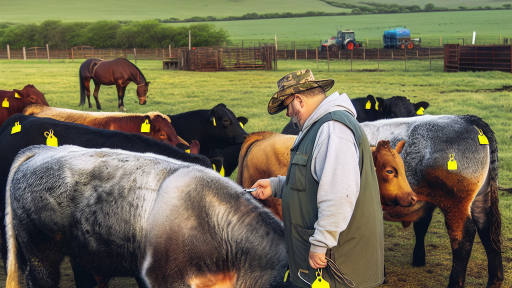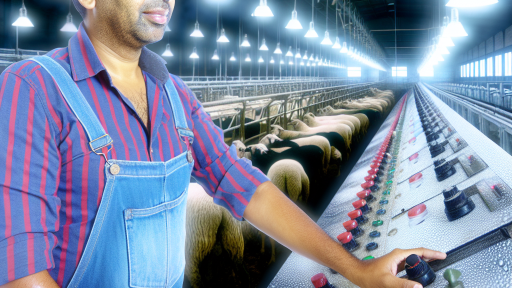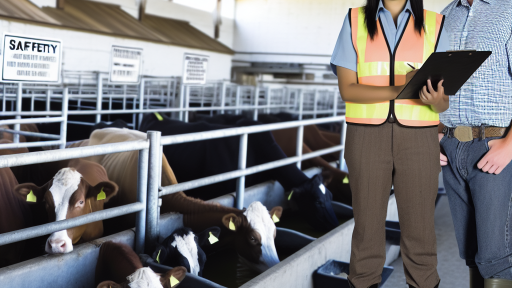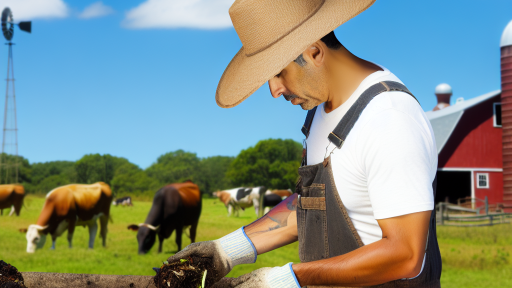Understanding the Nutritional Requirements of Goats for Enhanced Milk Production
Importance of Nutrition
Nutrition plays a critical role in goat milk production.
Healthy goats lead to higher milk yields.
Moreover, proper nutrition improves the overall health of the herd.
Key Nutrients for Milk Production
Goats require a balanced diet rich in essential nutrients.
These nutrients include proteins, carbohydrates, and fats.
Additionally, vitamins and minerals are crucial for optimal performance.
Protein Requirements
Protein is vital for the development of milk-producing tissues.
Goats need high-quality protein sources, such as alfalfa or soybean meal.
In fact, protein helps to increase milk yield per goat.
Energy Sources
Carbohydrates are the primary energy source for goats.
Fiber-rich feed promotes proper digestion and nutrient absorption.
Furthermore, energy from grains can enhance milk production significantly.
Essential Vitamins and Minerals
Vitamins A, D, and E support overall goat health.
Minerals like calcium and phosphorus are crucial for lactation.
Regular mineral supplementation can prevent deficiencies and boost production.
Transform Your Agribusiness
Unlock your farm's potential with expert advice tailored to your needs. Get actionable steps that drive real results.
Get StartedWater Intake
Water is a vital component of milk production.
Goats require adequate hydration for maximum milk yield.
Access to fresh, clean water promotes better health and productivity.
Feeding Strategies
Implementing effective feeding strategies is essential.
Consideration of individual goat needs can enhance results.
Additionally, balance between forage and concentrate is necessary.
Monitoring and Adjusting Diets
Regularly monitor the nutritional status of your goats.
Adjust diets based on production levels and health conditions.
This proactive approach ensures optimal milk production year-round.
Selecting the Right Goat Breeds for Optimal Milk Yield
Understanding Goat Breeds
Different goat breeds produce varying amounts of milk.
Understanding these differences is crucial for farmers.
It helps in selecting the best breed for specific needs.
Popular Dairy Goat Breeds
Saanen goats are known for their high milk production.
Additionally, they are docile and easy to handle.
Alpine goats have a robust constitution and adaptable nature.
They also produce good milk with a unique flavor.
Nubian goats offer not only quantity but also rich, creamy milk.
Factors to Consider When Selecting Breeds
Consider climate suitability for the chosen breed.
Some breeds thrive in warmer climates, while others prefer cooler environments.
Additionally, assess the nutritional needs of each breed.
A balanced diet enhances milk production significantly.
Farmers should also evaluate the breed’s resistance to diseases.
Genetic Considerations
Genetics play a significant role in milk yield.
Selecting goats with high genetic merit increases productivity.
Showcase Your Farming Business
Publish your professional farming services profile on our blog for a one-time fee of $200 and reach a dedicated audience of farmers and agribusiness owners.
Publish Your ProfileUtilizing artificial insemination can help enhance breed quality.
It allows farmers to access superior genetic lines.
Breed Grouping for Specific Goals
Group your goats based on your production goals.
For example, focus on those bred for high volume milk production.
Alternatively, select breeds noted for rich milk with flavor profiles.
Consultation with Experts
Consulting with livestock experts can provide critical insights.
They help identify the best breeds suited for your conditions.
Tapping into local farmer networks can also offer valuable advice.
Natural Feeding Practices: Foraging vs. Supplementing
Understanding Foraging
Foraging allows goats to graze on natural vegetation.
This practice offers nutritional diversity.
Additionally, it promotes natural behaviors in goats.
Healthy foraging reduces feeding costs significantly.
Goats benefit from a varied diet rich in vitamins and minerals.
Benefits of Foraging
Foraging improves the overall health of goats.
It helps maintain a healthy weight and milk production.
Furthermore, foraging supports better digestion and lessened stress.
These elements contribute to higher milk yield sustainably.
Challenges of Foraging
Foraging can sometimes lead to overgrazing if not managed.
Limited access to quality foraging areas may pose a problem.
Additionally, seasonal changes can affect available forage.
Farmers must monitor goats to ensure they receive adequate nutrition.
Supplementing Goat’s Diet
Supplementing goat diets is sometimes necessary.
This provides essential nutrients not found in foraged food.
High-quality supplements can enhance milk production.
Protein, minerals, and vitamins are crucial for optimal health.
Types of Supplements
Commercial feeds are a popular option.
Grain mixes provide energy and protein easily.
Mineral blocks add necessary trace minerals and vitamins.
Moreover, legumes can serve as good protein sources.
Deciding Between Foraging and Supplementing
Certain factors determine the best feeding approach.
The availability of forage resources significantly impacts decisions.
Additionally, goat lifecycle stages may necessitate different diets.
Monitoring goat health helps in making informed feeding choices.
Learn More: Preventing Common Goat Diseases Naturally
The Role of Pasture Quality and Management in Goat Milk Production
Understanding Pasture Quality
Pasture quality directly influences goat milk production.
High-quality pasture provides essential nutrients to goats.
It improves milk yield and enhances milk flavor.
Furthermore, rich grasslands promote goat health and well-being.
Key Nutrients for Goats
Goats require a balanced diet for optimal milk production.
Proteins, carbohydrates, vitamins, and minerals are vital.
Showcase Your Farming Business
Publish your professional farming services profile on our blog for a one-time fee of $200 and reach a dedicated audience of farmers and agribusiness owners.
Publish Your ProfileFor instance, protein helps in muscle development.
Additionally, minerals such as calcium support milk secretion.
Effective Pasture Management Strategies
Proper pasture management practices enhance production levels.
Rotational grazing allows for efficient forage use.
It prevents overgrazing and maintains pasture health.
Moreover, regular soil testing ensures nutrient requirements are met.
Seasonal Considerations
Seasonal changes affect pasture quality and availability.
In spring, lush grasses provide ample nutrition.
During summer, it’s crucial to manage heat stress.
Thus, providing shade and water is essential.
In winter, supplemental feeding may be necessary.
The Importance of Biodiversity
Diverse plant species contribute to pasture quality.
They provide a variety of nutrients for goats.
Additionally, biodiversity enhances soil health and resilience.
Incorporating legumes improves nitrogen levels in soil.
Monitoring and Adjustment
Ongoing monitoring of pasture conditions is key.
Adjustments based on seasons and goat needs optimize outcomes.
Regular assessments help identify nutrient deficiencies.
Prompt actions can prevent declines in milk production.
You Might Also Like: Nutritional Needs of Various Exotic Livestock
Integrating Herbs and Natural Supplements to Boost Milk Production
The Role of Herbs in Goat Milk Production
Herbs enhance goat health and improve milk yield.
They provide essential nutrients and promote digestion.
Furthermore, specific herbs can stimulate milk flow effectively.
Popular Herbs for Enhancing Milk Production
- Fennel increases milk secretion.
- Fenugreek supports healthy lactation.
- Thyme enhances overall health and vitality.
- Ginger improves digestion and nutrient absorption.
Incorporating Natural Supplements
Natural supplements can benefit goat nutrition.
They provide vitamins and minerals to enhance milk quality.
Probiotics support gut health and improve milk output.
Types of Natural Supplements
- Yeast cultures benefit gut flora and digestion.
- Mineral blocks supply essential trace elements.
- Vitamins A, D, and E are crucial for dairy goats.
- Omega-3 fatty acids improve milk composition.
Best Practices for Using Herbs and Supplements
Start by consulting a veterinarian for tailored advice.
Introduce new herbs gradually to monitor effects.
Maintain proper dosages and schedules for supplements.
Regularly evaluate the goats’ health and milk production levels.
Monitoring Results
Track milk production metrics consistently over time.
Adjust herb and supplement usage based on observed results.
Engage with fellow farmers to share successful strategies.
Uncover the Details: Essential Guide to Sustainable Fish Farming Practices
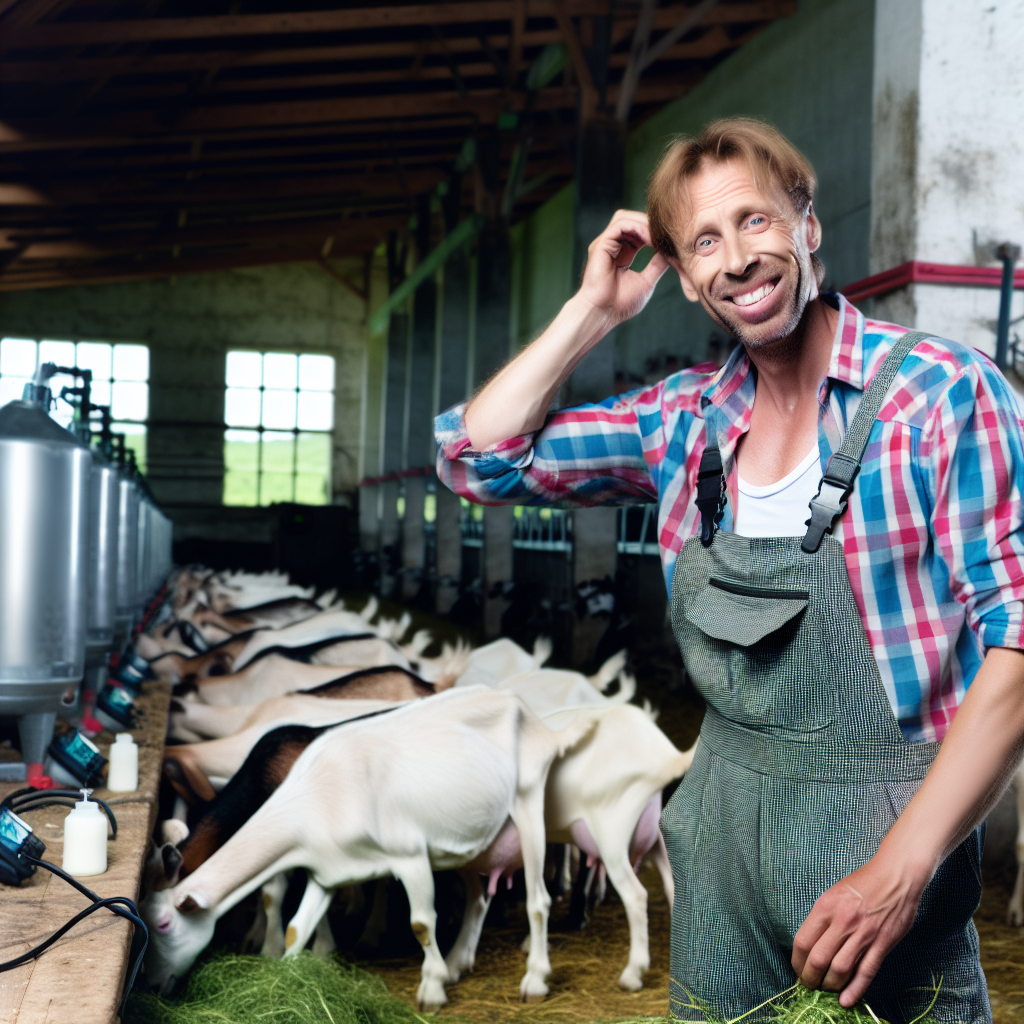
Implementing Stress Reduction Techniques for Dairy Goats
Understanding the Impact of Stress
Stress adversely affects dairy goats’ milk production.
It can lead to reduced milk yields and quality.
Understanding stressors helps in developing effective solutions.
Identifying Common Stressors
Various factors contribute to stress in dairy goats.
Environmental conditions play a significant role.
- Extreme temperatures can cause discomfort.
- Overcrowding leads to aggression and stress.
- Noisy surroundings disturb their peace.
Creating a Comfortable Living Environment
A comfortable environment promotes well-being.
Showcase Your Farming Business
Publish your professional farming services profile on our blog for a one-time fee of $200 and reach a dedicated audience of farmers and agribusiness owners.
Publish Your ProfileEnsure proper ventilation in goat housing.
Temperature control keeps animals comfortable.
Provide adequate space to minimize competition.
Use bedding material that absorbs moisture and provides warmth.
Enhancing Social Structures
Goats are social animals that thrive in groups.
Maintain stable herd dynamics to reduce stress.
- Introduce new goats gradually to the herd.
- Monitor for signs of bullying or aggression.
Utilizing Natural Soothing Techniques
Natural remedies can help alleviate stress among dairy goats.
Consider using herbal supplements known for calming effects.
Incorporate calming scents, like lavender, into their environment.
Implement gentle handling techniques to build trust.
Establishing Regular Routines
Goats thrive on routine and predictability.
Establish consistent feeding and milking schedules.
Routine activities reduce anxiety and improve comfort.
Adjust schedules gradually to prevent confusion.
Monitoring Health and Nutrition
Healthy goats produce quality milk efficiently.
Regular health checks prevent illness-related stress.
Provide a balanced diet to support overall health.
- Ensure access to fresh water at all times.
- Supplement with minerals necessary for lactation.
Engaging in Positive Interactions
Positive human-goat interactions foster trust.
Spend time with the goats for familiarization.
Use soothing tones during handling and care.
Encourage gentle play to improve their mood.
Explore Further: Lighting Solutions For Livestock Housing
Maintaining Proper Milking Techniques and Schedules for Better Output
Understanding the Importance of Timing
Milking goats at the right times enhances milk production.
Regular schedules help establish a routine for both the goats and farmers.
Consistency forms the foundation of successful milking practices.
Implementing Efficient Milking Techniques
Using the correct milking method boosts milk yield significantly.
Adopting a gentle touch reduces stress on the goats during the process.
Make sure to maintain a calm environment while milking.
Additionally, cleanliness is key to preventing infections and ensuring quality.
Caring for the Goats Pre- and Post-Milking
Regular health checks before milking are crucial.
You should ensure their udders are clean and dried to minimize bacteria.
After milking, provide an immediate feed reward to create positive reinforcement.
Monitoring Milk Production Levels
Keeping detailed records helps track production trends effectively.
Identify any deviations to adjust feeding and milking schedules accordingly.
Data analysis facilitates informed decision-making for future improvements.
Adapting to Seasonal Changes
Milk production often varies with seasonal changes and external factors.
Adjust milking schedules based on weather, nutrition, and goat cycles.
It’s essential to remain flexible to optimize production year-round.
Understanding the Impact of Seasonal Changes on Goat Milk Production
Seasonal Variations in Milk Yield
Goat milk production varies significantly with the seasons.
In warmer months, does may produce more milk due to increased forage availability.
Showcase Your Farming Business
Publish your professional farming services profile on our blog for a one-time fee of $200 and reach a dedicated audience of farmers and agribusiness owners.
Publish Your ProfileConversely, colder weather can lead to a decrease in milk yield.
Understanding these patterns helps farmers plan for fluctuations.
Nutritional Needs Throughout the Seasons
Nutritional requirements change with the seasons as well.
During spring and summer, goats require more energy-rich feeds.
This is crucial for maintaining optimal milk production levels.
In fall and winter, a focus on high-fiber feeds becomes important.
These feeds help goats maintain body condition in colder temperatures.
Breeding Cycles and Seasonal Effects
Breeding times often correlate with seasonal changes.
Many farmers prefer to breed goats in the fall.
This timing allows freshening to occur in spring.
Goats that kid in spring often experience peak milk production during warmer months.
Management Practices for Seasonal Optimization
Practicing proper herd management can enhance milk yields year-round.
Providing adequate shelter during harsh weather protects the animals.
Artfully managing pasture rotations maintains healthy forage availability.
Additionally, employing nutritional supplements can support goats during low-production seasons.
Health Considerations Related to Seasons
Seasonal changes can affect goat health, thereby impacting production.
Heat stress in summer can lead to reduced appetite and lower milk yield.
Implementing shade and hydration access is critical during hot months.
In contrast, cold weather necessitates preventive health measures.
Monitoring for illnesses related to damp conditions is crucial in winter.

